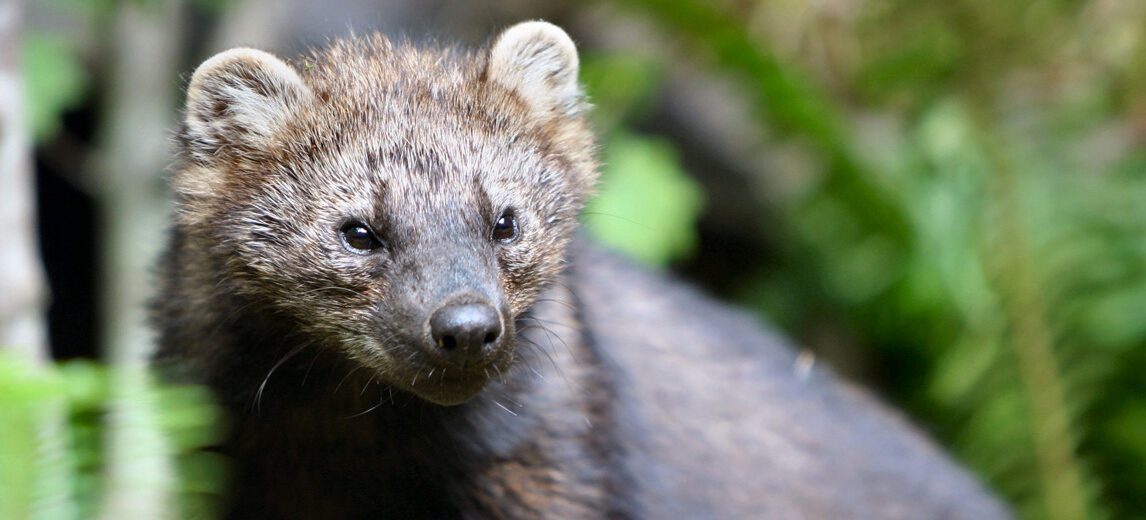
A member of the weasel family, the fisher is native to North America (United States & Canada). Once hunted for their fur to near extinction, these critters have bounced back from elimination due to the efforts of conservationists. They now number over 100,000. Which is good too, as their reduction has cause a boom in the porcupine population and subsequent tree damage. These creatures prefer dense coniferous and mixed forests. Their main threats to survival are habitat loss and deforestation, due to urbanization.
First the Stats…
Scientific name: Pekania pennanti
Weight: Up to 8.3 lbs.
Length: Up to 2.5 feet, plus a 12 inch tail
Lifespan: Up to 10 years
Now on to the Facts!
1.) Fishers prey on rabbits, snowshoe hares, squirrels, mice, shrews, birds, and their favorite… porcupines. They will also feast on fruit, berries, mushrooms, and beechnuts. Despite their name, they aren’t known for eating fish.
2.) Their only real predator is us humans. Although the young can be taken by owls.
3.) The fisher goes by many names: black cat, fisher cat, black fox, pékan, and many others.
4.) They are both nocturnal (active at night) and crepuscular (active at dawn and dusk).
5.) Fishers are solitary and territorial. Only coming together to mate.
But wait, there’s more on the fisher!
6.) Fisher cats patrol an area of 3 – 8 square miles, with overlapping territories.
7.) These critters have evolved from their ancestors in the Pliocene Era between 2.5 – 5 million years ago.
Did you know…?
Fishers are excellent climbers with hind feet that can rotate 180°! Their wide paws and sharp claws help them not only scale trees with the best of them, but they can traverse snow easily.
8.) They make their dens in trees, logs, and rocky outcrops.
9.) Females birth 2 – 3 kits each season.
10.) The female can also undergo delayed implantation. Where she can mate with a male and then hold onto the sperm for to 9 – 10 months; giving birth when conditions are optimal.
But wait, there’s still more on the fisher!
11.) Pékans make a hissing and/or a growling sound when threatened.
12.) Producing a smelly substance from their hind paws, fishers mark their territory.
13.) Being part of the mustelid family, they can also spray a stinky musk when threatened.
14.) When running, their above ground tail position makes them look like a cat. Hence their common names black cat or fisher cat.
15.) Fishers are in the same family as weasels, ferrets, martens, badgers, grisons, otters, polecats, minks, stoats, tayras, wolverines, skunks, and others.
Now a Short Fisher Video!
Also, check out the Critter Science YouTube channel. Videos added frequently!
Want to suggest a critter for me to write about? Let me know here.



